Strobe lights can be safe for most people, but there are certain considerations and risks associated with their use. Strobe lights can trigger or worsen symptoms in individuals with certain medical conditions and should generally be avoided by people with:
*Avoid strobe lights if flashing lights trigger PTSD. Otherwise, light therapy can actually be a treatment for PTSD.
Aside from flashing, the main concerns with lights are UV and blue light. The LED’s in our lights are UV shielded and the amount of blue light is less than most indoor lighting. Your closed eyelids will filter out most blue light anyways as it cannot penetrate more than 1mm into the skin. You likely receive far more blue light exposure from your phone and laptop.
If you have any concerns, please speak with your doctor. Read our warning and legal disclaimers for more information.
How you feel during a light trip depends on several factors including but not limited to the type of session you chose (i.e., exploratory, relaxing, stimulating, comfortable, moderate, or intense), any medications you're on (especially anti-depressants), what you ate, how you slept, your mood, your life situation (e.g., job loss, divorce), your intentions, etc. Our goal is for everyone to have a great trip each and every time. We will work with you to select the best session(s) for your stated goals, but ultimately, you decide for yourself.
The majority of our sessions are designed for relaxation, where a desired and expected outcome would be a calm, peaceful state. If you chose a stimulating session, you may feel creatively inspired and motivated, "buzzing" with great ideas, or in a happy mood, and this may or may not feel similar to the effect of caffeine or other stimulants. If you chose an exploratory or psychedelic session, you likely want a stronger and more profound experience. While the sessions may feel intense, you should never feel out of control, afraid, or over your head. If your are having a "bad trip" or things feel too intense, PLEASE speak up. You can stop a session at any time.
Sessions designed to simulate the effects of psychedelic drugs, enter deep trance states, or dissociate may leave you feeling loopy and discombobulated. Please allow time to reintegrate and readjust post-session. Don't hesitate to ask for help if you feel uncomfortable resuming daily activities like walking, driving, or returning to work.
Depending on the light used, you can sit or lay down and the light is positioned 1-5 feet away, aligned with your forehead (third eye). Dream Machine lights are designed to be used sitting. RoXiva lights are mounted to a boom arm on a tripod stand, so can be used sitting or laying down.
In a group session, travelers can each get their own light or lay in a circle, heads together at the center of the circle, feet at the outside edge of the circle. You may lay on a mat, sheepskin, a lounger, a pillow, your choice.
Below are images (from the light manufacturers) of individual and group sessions.
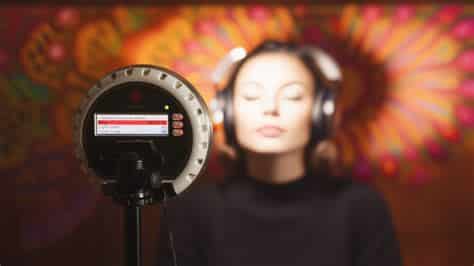
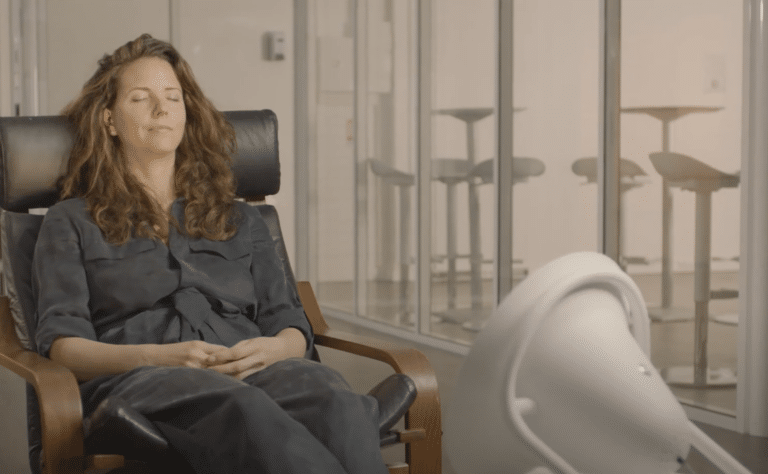
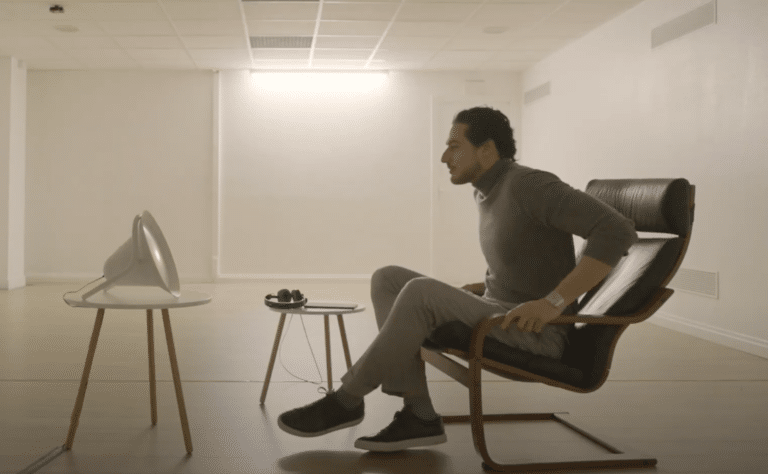

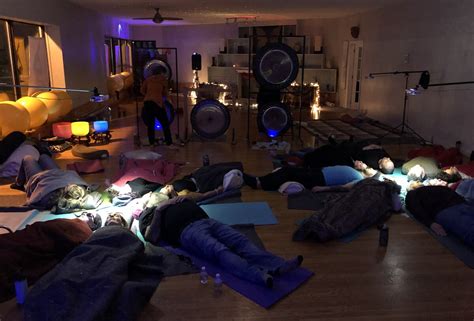
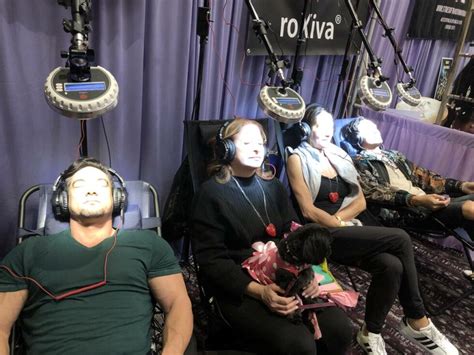
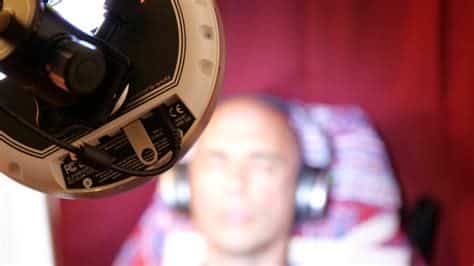
We price light sessions very affordably at $2 per minute. Groups of 6 or more people, seniors, and military receive a 50% off discount ($1 per minute).
You choose the sessions and decide how many sessions to experience per visit. Demo sessions do count toward your total time. There are no minimum or maximum time limits, though we recommend you do not exceed 50 minutes your first time, 2 hours per day, or 3-4 sessions per week. It's beneficial to take time to integrate your experiences.
Most light travelers report seeing vivid colors, organic and geometric shapes, and kaleidoscopic patterns. Some experience visions or imagery (e.g., imagination, memory, "downloads"). Other experience the sensation of floating or an "expansive" feeling.
Depending on the type of session you choose (i.e., exploratory, relaxing, stimulating, comfortable, moderate, or intense), you may feel relaxed, rested, and peaceful, or excited, creative, and inspired.
Everyone's experience is unique. Decide what you want from each session and we'll work with you to customize a journey in alignment with your goals and intentions.
Browse drawings of Dreamachine experience participants in the UK.
The following videos are approximations of the visuals light travels have reported.
Please arrive well hydrated, rested, and sober. Drugs are not necessary to enhance the experience. We reserve the right to deny service to those under the influence of drugs and/or alcohol.
We recommend you avoid caffeine, sugar, and stimulants for at least a 4 hours before a light journey (or you may feel jittery).
Setting intentions is encouraged as light therapy aims to deliver exactly what you need in the moment. Needs and desires are yours to define.
Prior to your session, you will review our legal disclaimers and liability waiver. Feel free to ask questions prior to your session.
Everyone's first experience (no exceptions) is a brief, Level 1 comfortable intro/demo session, which serves several purposes.
Provided your introductory session is enjoyable, you will proceed to choosing your next adventure. We recommend you do not exceed 50 minutes your first time, 2 hours per day, or 3-4 sessions per week. You will want time to process, digest, and reflect.
Your facilitator will be keeping an eye on you, however, don't hesitate to speak up. If you want to stop, say so, cover your eyes, and move away from the light. If you would like the light intensity, music volume, or something else adjusted, just let your facilitator know.
Choose an experience that suits your goals (e.g., relaxation, stimulation, exploration) and intensity level (e.g., comfortable, moderate, intense). If you don't like the session you chose, stop and make another selection.
We love this question! First of all, set your body up for success. Come well-rested and hydrated. Light travelers report that they experience better visuals and more colors when they have regular sun exposure. Sunlight is good for your brain (and the rest of your body, too).
Consider your senses. Let's discuss your preferences in...
Feel free to bring and use personal items in your session. Although we do not sell audio, perfumes, or crystals, you may inquire about borrowing items from our personal library.
We do not yet offer PEMF or tactile audio (i.e., transducer stimulation such as SubPac or Woojer), but these are in the works!
Once you are seated or laying comfortably and the LEDs are turned on, light penetrates through closed eyes, travels via the optic nerve to your brain, affecting the pineal gland and thalamus.
Light waves travel through the fascia (i.e., biophoton communication), spreading through the body, synchronizing the brain with the light’s pulsing rhythm. This deepens the experience, activates neural networks and chemicals, relaxes the body, and awakens the unconscious mind.
As visuals unfold, inner worlds appear, thoughts fade, and breathing aligns with music and colors. The experience facilitates deep states of awareness, aiding in returning to these states independently.
Hypnagogia is the transitional state between wakefulness and sleep, characterized by vivid imagery and sensory experiences. This "magical space" is powerful for deep relaxation, cosmic journeying, lucid dreaming, creative visioning, and manifestation. During hypnagogia, the mind becomes highly receptive, allowing access to subconscious thoughts and enhancing creativity and problem-solving. It serves as a gateway to profound insights and heightened awareness, making it a valuable tool for meditation, inspiration, and self-discovery.
Take your time opening your eyes and feeling into your body again. Try to remember what you saw and experienced. You may want to draw a picture or feel creative in other ways. Notice any differences you feel. Consider journaling these sensations and reflections.
We recommend you spend 15-30 minutes to settle before jumping back into life (i.e., driving, working, using your phone). You might enjoy a warm beverage like green tea or chaga.
Over the next few days, pay attention to your thoughts, mood, and dreams. Enjoy life with family, outdoors, doing what you love. Tell us about it at your next session.
Stroboscopic light therapy, while a fascinating and powerful tool for relaxation, mental stimulation, and exploration of consciousness, should not be viewed as a "magic pill" that will resolve all of life’s challenges. It offers unique experiences that can deepen your understanding of yourself, help you tap into creativity, and even promote a state of calm or heightened awareness. However, it’s important to approach this practice with realistic expectations. Just like meditation, exercise, or a healthy diet, light therapy is one piece of a larger puzzle when it comes to overall well-being. Life is inherently complex, and expecting a few sessions of light therapy to magically transform every aspect of your life can lead to disappointment.
It’s also crucial to recognize that venturing into your own subconscious through light therapy can be an emotionally intense experience. While it can lead to profound insights and personal growth, it may also bring up unresolved emotions or memories that could be challenging to process on your own. Having a support system in place—whether it's a close friend, family member, counselor, or therapist—can be invaluable if you find yourself feeling overwhelmed or upset during or after a session. Remember, it’s okay to seek help and take things one step at a time. Stroboscopic light therapy can be a powerful ally on your journey, but it works best when integrated thoughtfully into a broader, balanced approach to mental and emotional health.
All healing modalities (e.g., meditation, breathwork, floatation, brainwave entrainment) come with the possibility of side effects. It's important to be well-informed about both the benefits and potential risks of any technique or practice you're considering.
A useful resource is the site for the non-profit, Cheetah House, which outlines 59 categories of meditation-related symptoms that may be distressing or impair functioning. These symptoms are categorized into seven domains: affective, cognitive, somatic, perceptual, sense of self, conative, and social. Each domain includes various symptoms such as emotional detachment, changes in cognition, physical discomfort, altered perceptions, and social withdrawal. The site emphasizes the importance of understanding these potential effects and provides resources for those experiencing difficulties related to meditation practices.